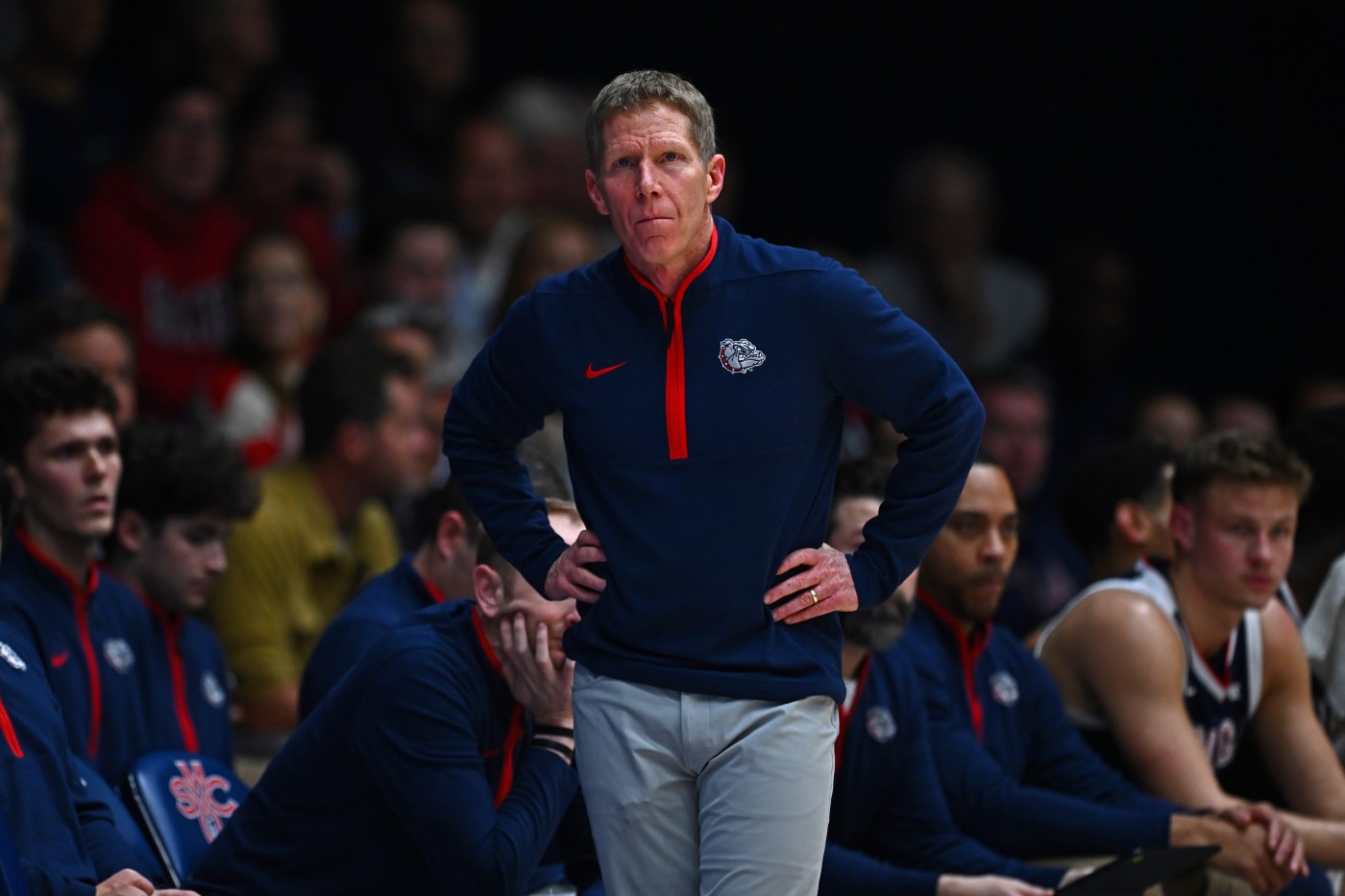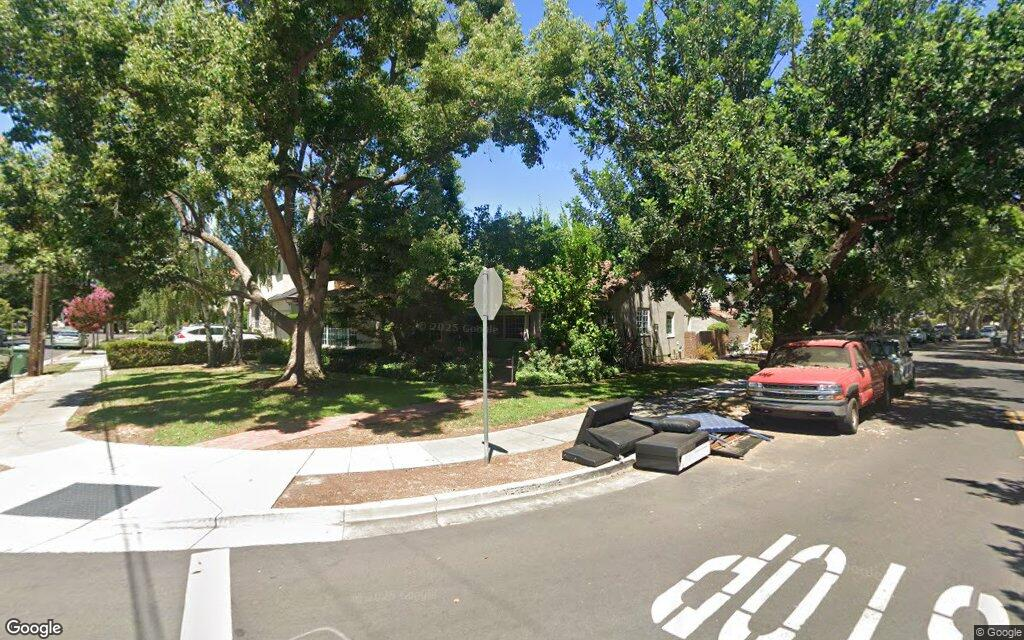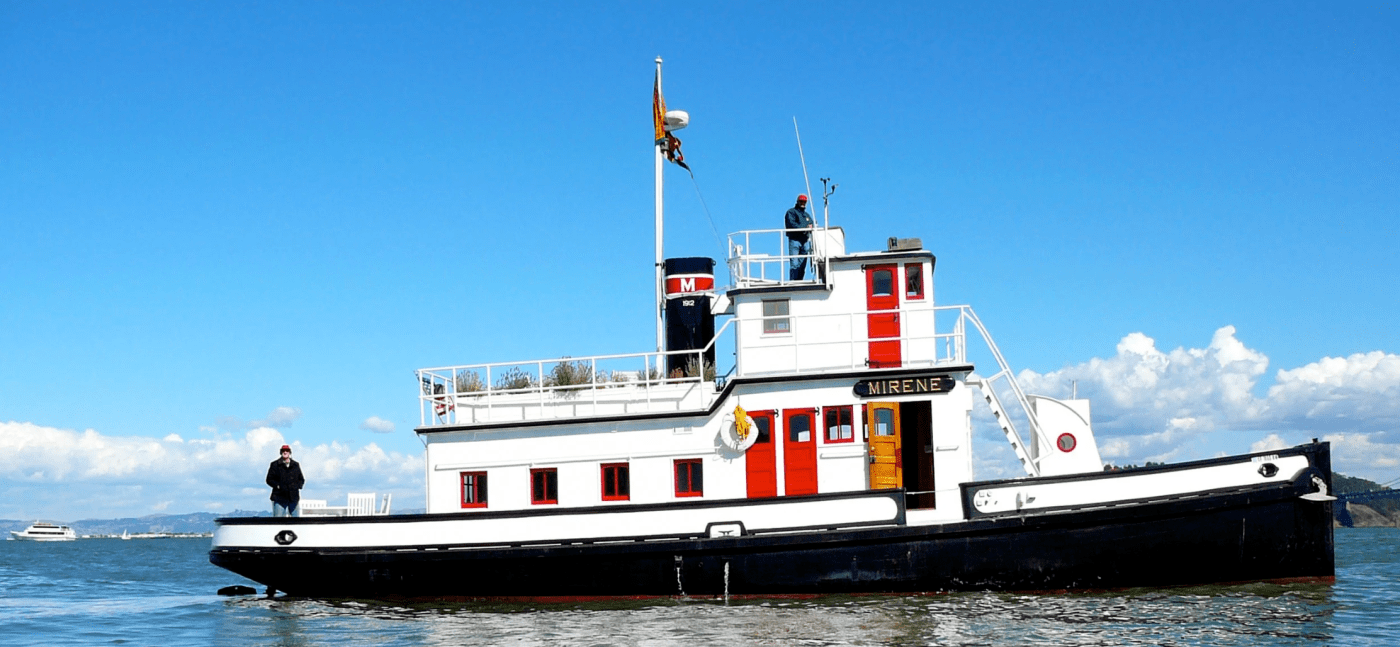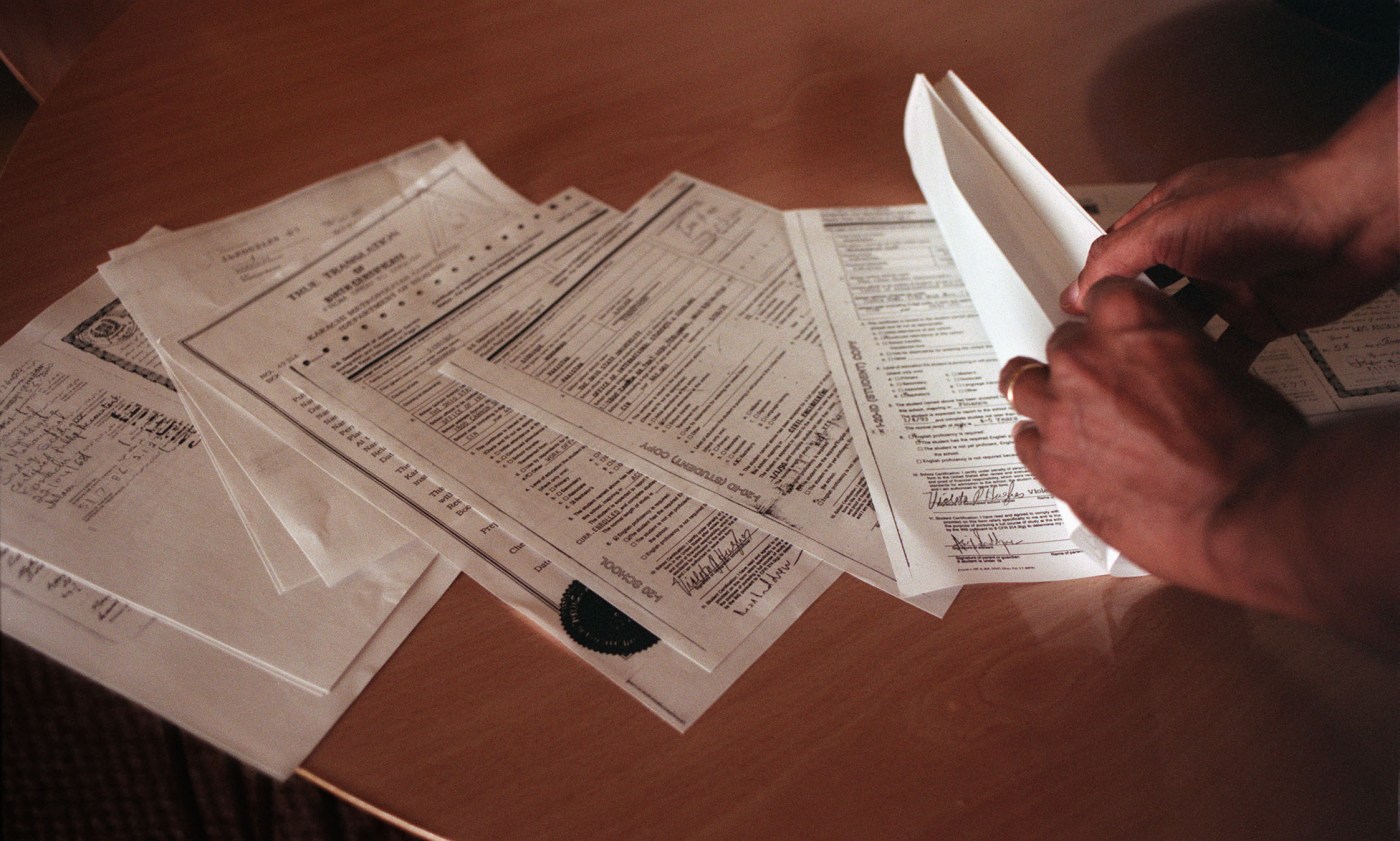The Hotline mailbag publishes weekly. Send questions to [email protected] and include ‘mailbag’ in the subject line. Or hit me on the social media platform X: @WilnerHotline
Some questions have been edited for clarity and brevity.
How do you see the rebuilt Pac-12 stacking up with other conferences in men’s basketball, beginning next season. — @jimmy0726
Let’s start this mailbag with basketball now that the season is underway — there’s plenty of time to address football issues later in this edition and throughout November.
To the specific question, the Hotline would respond candidly: The new Pac-12 should be more competitive nationally in men’s basketball than it will be in football.
If not, something will have gone very wrong on the court.
The Pac-12 is attempting to brand itself as a “top-five” football conference when it begins play in 2025-26, suggesting that it belongs just behind the ACC, Big Ten, Big 12 and SEC in the sport’s hierarchy (based on historical data).
But anyone paying attention this fall should recognize the American is setting a high bar. It has clearly outperformed the collection of teams that will make up the new Pac-12. That dynamic might prove fleeting or fixed; it’s too soon to draw any conclusions.
On the basketball side, the rebuilt Pac-12 will have no claims on being a “top-five” conference because the highest tier isn’t limited to four. The Big East is effectively a power conference with the likes of Connecticut, Villanova, St. John’s, Creighton, Marquette and others. In fact, the Big East might be stronger, team-for-team, than the ACC and Big Ten.
Until proven otherwise, and largely because of Gonzaga, the rebuilt Pac-12 could stake claim to being the sixth-best basketball conference — below the sport’s Power Five but above the group that includes the American, Atlantic 10, Mid-American, Missouri Valley, Mountain West and West Coast.
Given the planned resource allocation, the Pac-12 should be more successful on a yearly basis than those conferences.
Certainly, Pac-12 basketball stands to be more competitive nationally than Pac-12 football. A quick comparison explains our view:
— Gonzaga is a better basketball program than its football equivalent, Boise State, in the new Pac-12.
No offense to the Broncos, but the Zags have performed like a basketball blue blood for years; Boise State has not quite reached that level on the field.
— What’s more, the second-best basketball program in the new Pac-12, San Diego State, is superior within its sport to the second-best football program, which would be … Washington State? Oregon State? The Aztecs? There isn’t a clear option.
SDSU basketball is just two seasons removed from the Final Four and has reached the Sweet 16 on multiple occasions in the past 15 years. (The Aztecs are loaded this season, too.)
— The next basketball tier in the new Pac-12 features Utah State, which has participated in five of the past six NCAA Tournaments and has averaged 26 wins the last three seasons.
Granted, measuring cross-sport success is tricky, largely because the NCAA Tournament, which represents the desired threshold for basketball, is more accessible than the major bowl games and the College Football Playoff (as a four- or 12-team event).
And the collapse of the Pac-12 kneecapped the Washington State and Oregon State football programs in a manner that has no equivalent for San Diego State and Utah State basketball.
But based on what we have witnessed over the years, and what’s reasonable to expect in 2026-27 and beyond, the rebuilt Pac-12 has an open road to securing its position as the sixth-best basketball conference.
The challenge is more daunting on the football side.
What do you think of UCLA’s decision to leave the Rose Bowl and move their football games to SoFi Stadium? The Rose Bowl and City of Pasadena are suing UCLA to stop them. — JR
Our instinct is to enter a dash of nuance into the discussion.
Are the Bruins dead-set on leaving the Rose Bowl for SoFi Stadium? Or are they using the threat to negotiate better terms in a multi-decade lease they clearly believe isn’t favorable?
Because on the surface, the move makes zero sense. This isn’t about mileage — about SoFi being roughly 15 miles closer to campus than the Rose Bowl. It’s about identity preservation.
If UCLA moves to SoFi, home of the Chargers and the Rams and mere miles from USC, the Bruins would lose whatever morsel of traction they possess in the Southern California sports market.
The attendance issues at the Rose Bowl are partly rooted in the struggle for dollars and attention so many college football teams are experiencing across the country. (The in-home viewing experience is often better than the in-person version.)
But the empty seat situation is largely the result of the second-rate product the Bruins have sent onto the field in Pasadena for years. If they were winning at a high level, filling the Rose Bowl to a respectable level (crowds of 60,000 or more) would not be an issue.
If the administration believes that a 6-6 team would pack the house at SoFi — or even come close — it’s grossly miscalculating.
Which is why this fascinating saga could conclude with a renegotiated lease in Pasadena.
You keep writing that if Washington wins out, it will only have one victory over a Top 25 team. But Illinois was ranked when the Huskies won handily in Seattle. — Rob S
Appreciate the question, because this issue is a source of confusion for fans each November.
Yes, the Illini were ranked 23rd two weeks ago when they were overwhelmed in Husky Stadium. And yes, the Hotline has written several times recently that the Huskies could finish with just one victory over a ranked opponent (Oregon) if they win out.
That apparent contradiction is rooted in the CFP selection process.
When the committee crafts the final rankings on Dec. 6-7, it does not consider where teams were ranked during the season (at the time of kickoff of any given game).
The discussion is focused entirely on where teams are ranked on selection weekend.
Illinois dropped from the AP Top 25 after the lopsided loss in Seattle and, at 6-3, was not included in the initial CFP rankings released Tuesday.
And we aren’t convinced the Illini will climb back into the rankings by the end of the season — they don’t have enough schedule juice.
Admittedly, the committee might have a different view.
If Illinois wins out, finishes 9-3 and sneaks into the final CFP rankings, the Oct. 25 result would count as a ranked win for the Huskies and add some shine to their resume.
Heck, it might even push them over the top — and into the playoff.
I’ve heard that the Pac-12 Network sometimes had first choice of games. Does the Big Ten Network, even though it’s owned mostly by Fox, ever have first choice? In the same vein, what about the SEC and ACC Networks and ESPN? — @draywilson29
You heard right … and wrong.
Indeed, the Pac-12 Networks had the first pick in the weekly draft once per season, but that’s a tad misleading because of a quirk in the contract.
Every year, ESPN and Fox grabbed four games (two each) off the top before the season, thereby removing them from the weekly draft. So when it came time for the Pac-12 Network to use that No. 1 pick, none of the premier games were available. They had been taken off the table.
The Hotline certainly hasn’t examined the Big Ten’s contract, but we are unaware of any week in which the Big Ten Network has the first selection. Fox owns most of the No. 1 picks and places those games in the Big Noon window.
And keep this important difference in mind: The Pac-12 schools owned the Pac-12 Networks, which ceased to exist in the summer of 2024. It was, in some sense, competing with ESPN and Fox for the weekly inventory.
But Fox is the majority owner of the Big Ten Network, while ESPN owns the SEC and ACC Networks. The structure of those weekly drafts is designed to place the best games on Fox, ABC and ESPN, not the conference networks.
This weekend helps illustrate the situation in the ACC, where the Clemson-Florida State game — a matchup of unranked teams — has been relegated to the ACC Network.
Were the stakes for the matchup as high as expected before the season, the game assuredly would be on ABC.
All in all, the comparison between the Pac-12 Networks and its counterparts is apples-to-oranges because of the different ownership structures.
What are your thoughts on NCAA president Charlie Baker? He’s been on the job about one-and-a-half years. Do you have any insight on his performance as the NCAA president? — @cool_brezze
Actually, Baker has been on the job for two-and-a-half years, since March 2023. The fact that we had to double-check his start date speaks volumes about the roiling landscape.
When Baker took office, NIL was legal but evolving; revenue sharing was a mere concept; and the NCAA hadn’t approved unlimited transfers with immediate eligibility.
Baker is presiding over a different world — a world shaped by the courts, not his policies.
That said, Baker has embraced the changes in a largely reasonable and pragmatic manner. He constitutes a monumental upgrade over his predecessor, Mark Emmert, who steered the NCAA into an abyss so deep the courts had to intervene.
We would give Baker high marks for his work thus far (either an A- or B+) with the caveat that on several fronts, he had no choice but to evolve and accept.
You published an article stating the Mountain West needs the Pac-12’s poaching penalty revenue ($55 million) soon. But doesn’t the money withheld this year from the five departing members cover the initial payment? — @NateJones2009
According to the Mountain West, Boise State, Colorado State, Fresno State, San Diego State and Utah State owe the conference approximately $100 million in exit fees.
The schools disagree, and three of them — those outside California — have taken the conference to court over the payments.
Our understanding is the Mountain West cannot distribute the money until there’s a resolution in the case, which fits with every comparable situation that has crossed our radar. When are disputed funds ever released by the defendant?
What happens if the Mountain West schools don’t receive the anticipated cash by July 1, 2026? We don’t expect any delay to immediately prompt UNLV and Air Force to depart the conference.
Instead, we’re curious about the response of the Mountain West presidents now that it’s clear the legal processes will take many months to play out (with soaring attorney fees).
Will they seek settlements in both cases? And if so, how would a reduction in cash impact the membership’s long-haul commitment to the conference?
The timing of the promised payments is one element in the broader calculation.
Is it bad luck that Stanford and Cal are in a new conference but again at odds with the TV provider of NFL Sunday Ticket? The hits seem to keep coming even without former Pac-12 commissioner Larry Scott. — @sfw4422
For those unfamiliar, the question refers to the two-week-old carriage dispute between YouTube and ESPN, which owns the ACC’s media rights and the ACC Network.
As a result, approximately 10 million YouTube subscribers — that figure includes the Hotline, by the way — are not able to watch ESPN content.
Yes, it’s bad luck for the Cardinal and Bears, who have enough challenges just keeping pace in their new home.
This matter is wholly unrelated to anything they have done competitively (or otherwise) or to any policies implemented by ACC commissioner Jim Phillips. Comparisons to Scott’s misguided strategies are unwarranted.
But it’s deeply unfortunate for all involved.
And as always, the dispute will eventually be resolved with only one loser: consumers.
Any news on the Pac-12 football schedule for 2026? — @ColAthAdv_Will
The Hotline recently spoke with Merton Hanks, chief of Pac-12 football operations, about a slew of matters for next year. Our distinct impression: They aren’t close to a final version of the 2026 schedule.
Hanks explained, first and foremost, that he is planning on an eight-team structure for next season (i.e., no more expansion).
He also said Pac-12 and campus executives have examined 120 versions of the ’26 schedule, a number that reflects the immensely complicated situation.
Related Articles
CFB recruiting: UCLA’s returns, Stanford’s pickup, Cal’s favorable flips
On media: Breaking down the Big 12 basketball broadcast plan
College football picks: BYU, USC, Arizona cover; Oregon, Washington don’t
Holy Score: CFP rankings leave Utah, BYU dependent on each other
CFP rankings: Big 12, Notre Dame big winners; ACC snubbed
Should the Pac-12 play eight conference games or seven?
Should it enter into a scheduling arrangement with another conference?
Should it create an intra-conference home-and-home model akin to what Washington State and Oregon State have done this season?
How does College Football Playoff expansion impact the schedule?
How do changes within the SEC and ACC affect the Pac-12’s plans? (Both conferences are switching to nine-game conference schedules, prompting the cancellation of several series with teams in other leagues.)
It’s five-dimensional chess played inside a wormhole.
Hanks has targeted December as the window to settle on the future location of the Pac-12 championship game (neutral site or on-campus).
Our hunch is the 2026 schedule won’t be finalized until early next year.
Why do you have James Madison ranked 25th in your AP ballot but San Diego State unranked? — @KoolEconomics
There is no right or wrong answer here. You could make a case for the Aztecs just as easily as you could for the Dukes — they are both 7-1 — or you could reasonably decide to exclude them both.
I considered a handful of teams for the final spot and picked the Dukes because their only loss is to No. 14 Louisville, and they were quite competitive: The game was tied entering the fourth quarter.
Meanwhile, San Diego State’s only loss came in decisive fashion to an unranked opponent (Washington State).
If you compare victories, then SDSU probably has a narrow edge with its shutout of Cal, whereas JMU hasn’t beaten a Power Four opponent. (The Dukes’ best win is a blowout of Old Dominion.)
Meanwhile, James Madison has faced a slightly stronger schedule than SDSU, based on the Sagarin computer rankings.
I went with the Dukes this week. Next week, maybe the lean is to the Aztecs. Or someone else.
*** Send suggestions, comments and tips (confidentiality guaranteed) to [email protected] or call 408-920-5716
*** Follow me on the social media platform X: @WilnerHotline





